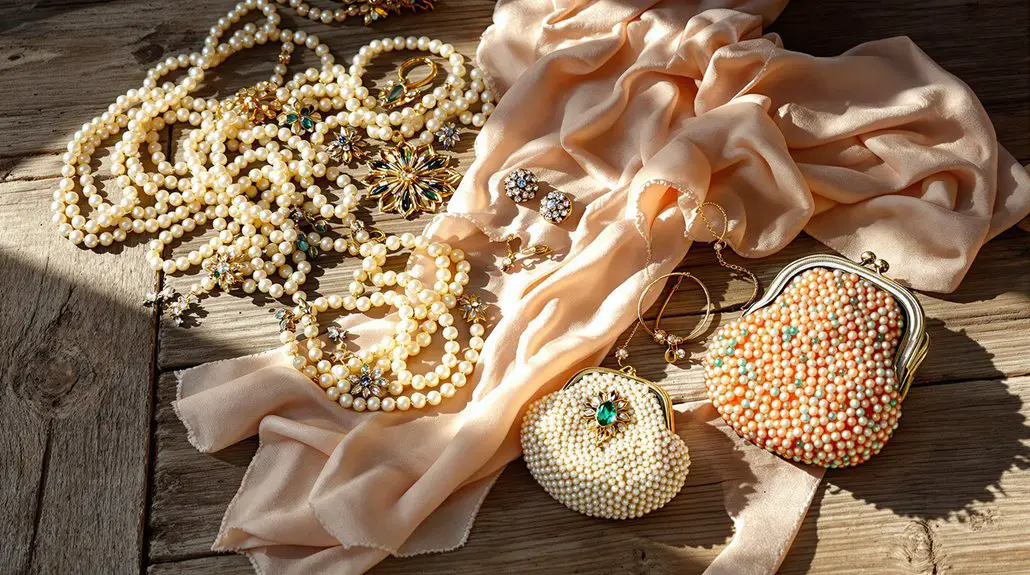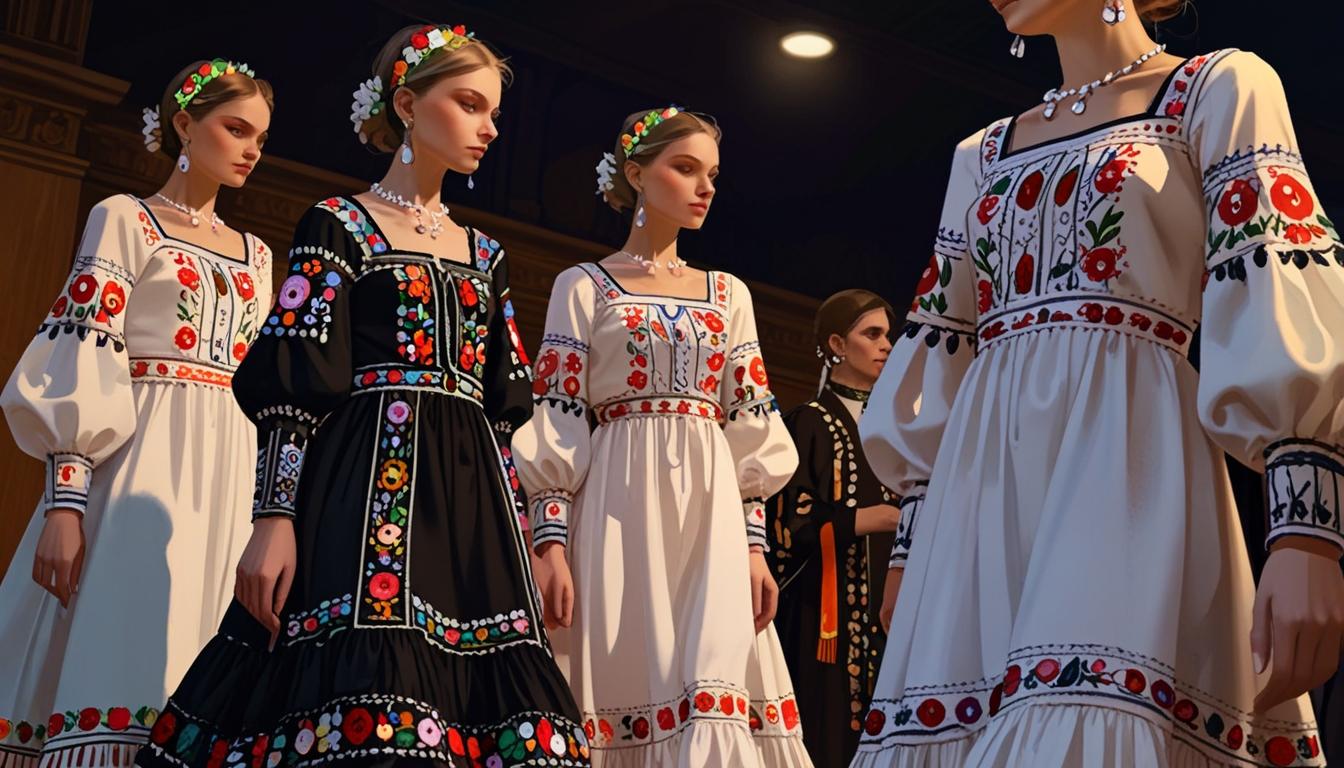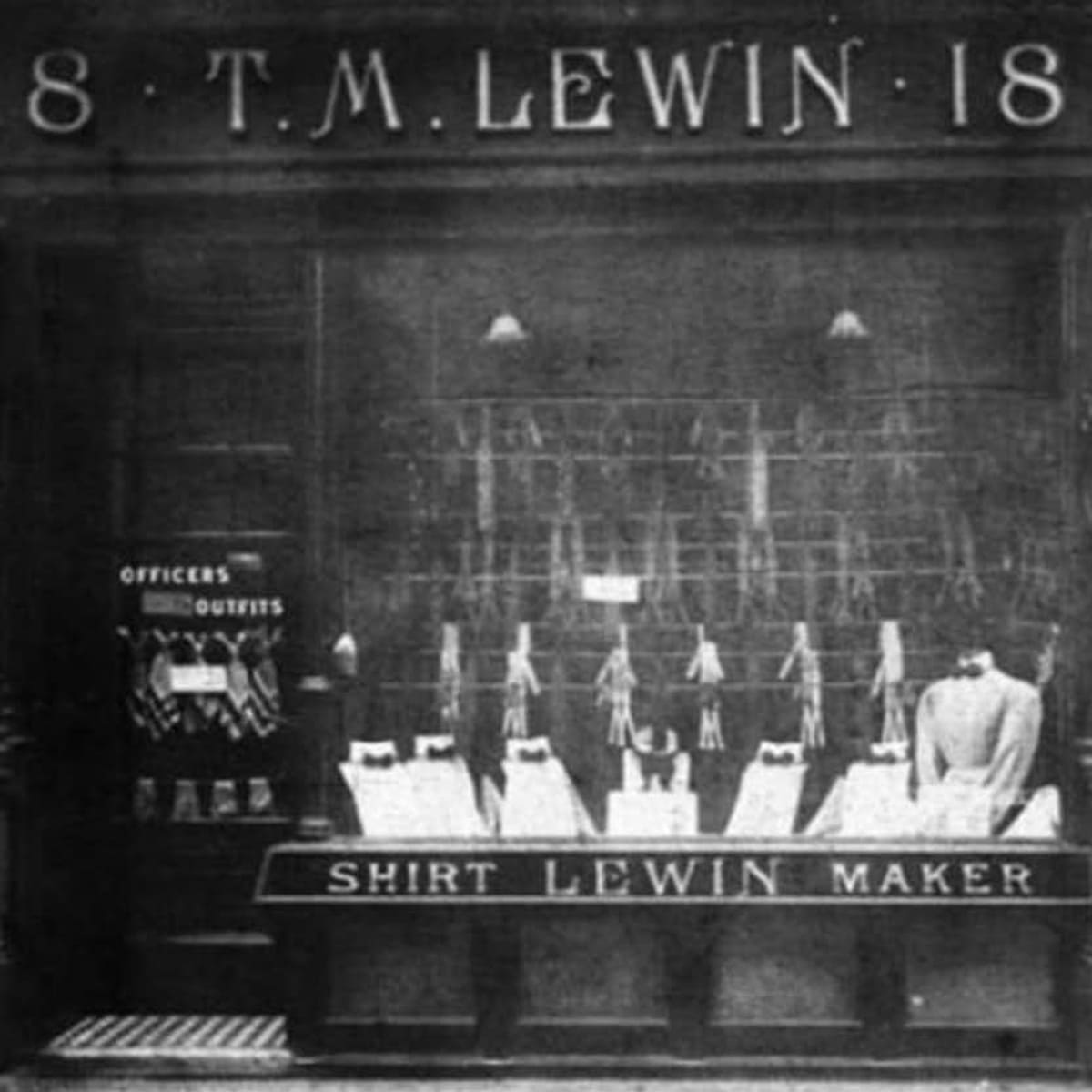To feature vintage accessories in your Depop store, you'll want to start with popular items like retro sunglasses, classic handbags, and eye-catching jewelry that align with current trends. Set up a professional photography space with soft lighting and thoughtful props to capture your pieces' authentic charm. Write detailed descriptions that tell each item's unique story while being transparent about condition and materials. Price your accessories competitively by researching similar sold listings, and don't forget to factor in your costs. Build genuine connections with customers through prompt responses and personalized touches – there's so much more to uncover about making your vintage accessories shine.
Choose Popular Vintage Items
With the right selection of vintage items, you can build a successful Depop store that stands out from the competition. Start by focusing on trending categories that'll catch your buyers' eyes – vintage clothing is always a hot seller, especially when you're offering unique pieces like flowy dresses and statement tops. Make sure to include retro style sunglasses which are seeing increased demand across all genders. Additionally, consider stocking timeless pieces from classic Ralph Lauren apparel, as they often command high resale prices.
Don't forget about those must-have accessories that'll complete any outfit, from classic handbags to eye-catching jewelry. You'll want to stock up on specific brands that consistently perform well in the vintage market. Levi's jeans and jackets are practically gold in the resale world, while anything Chanel will have fashion enthusiasts clicking that "Buy Now" button faster than you can say "vintage."
Remember to think seasonally too – those dreamy summer dresses and cozy winter jackets should hit your store just before the season starts. For that extra special touch, keep an eye out for unique finds that tell a story. Upcycled pieces, nostalgic sports team gear, and items with distinctive retro patterns or prints can become your store's signature offerings, helping you create a memorable shopping experience that keeps customers coming back for more.
Perfect Your Photography Skills
Now that you've curated your vintage collection, it's time to showcase it through enchanting photography. You'll want to master a few key elements to make your items truly shine, starting with lighting that creates the perfect ambiance.
Try using soft, warm light from antique lamps or natural sources, and don't forget to diffuse harsh rays for that dreamy, timeless feel. Setting up two box lights with your backdrop can ensure consistent, professional-looking photos regardless of natural lighting conditions.
Your backdrop choices can make or break your shop's professional appearance, so stick to clean, neutral backgrounds that won't steal attention from your treasures.
When you're styling your shots, carefully select vintage props that complement your items – think delicate lace doilies paired with art deco jewelry, or weathered leather books alongside vintage watches. These thoughtful touches will transport your viewers to another era while highlighting your item's best features.
When it comes to editing, remember that less is more. You'll want to maintain that authentic vintage charm, so focus on subtle adjustments to exposure and contrast rather than heavy-handed filters.
If you're retouching imperfections, keep it natural – your buyers will appreciate honest representation that still looks polished and professional.
Write Compelling Item Descriptions
| Essential Elements | Marketing Magic | Technical Details |
|---|---|---|
| Accurate measurements | Story behind piece | SEO-friendly keywords |
| Material composition | Styling suggestions | Relevant hashtags |
| Condition details | Seasonal appeal | Brand authenticity |
| Color and texture | Rarity factor | Shipping information |
Start with the basics – brand name, size, and condition – but don't stop there. You'll want to weave in those special details that make vintage pieces irresistible. Maybe it's the hand-stitched beading on a 1950s clutch or the butter-soft leather of a 1970s shoulder bag. Remember to mention any signs of wear honestly; vintage lovers appreciate authenticity and often see minor imperfections as part of the charm. It's also beneficial to highlight the pricing variability of similar brands, as it can further entice potential buyers. Finally, boost your description's visibility by incorporating trending hashtags and keywords that'll help your items surface in searches. Focusing on sustainable fashion will help attract eco-conscious millennials who actively seek pre-loved accessories.
Set Your Price Points
Setting the right price for vintage accessories requires a delicate balance of market research and value assessment. When you're diving into the world of vintage pricing, you'll want to start by examining sold listings to understand what buyers are actually willing to pay.
Don't forget to filter Depop's search results for "sold items" – it's like having a crystal ball that shows you the sweet spot for pricing similar pieces.
Consider your item's unique qualities when setting its value. If you've got a rare 1920s art deco brooch in pristine condition, you can price it higher than a more common vintage piece from the 1980s.
You'll want to factor in the item's condition, historical significance, and current market availability – these elements work together to justify your asking price. Remember, if you're struggling to find anything similar in other shops, that's often a sign you can price your piece a bit higher.
Stay competitive but don't undersell your treasures. Add up your costs, including shipping supplies and platform fees, then factor in your desired profit margin.
When you're transparent about an item's condition and provide stellar photos, you can confidently stand by your pricing decisions.
Build Customer Relationships
With your pricing strategy in place, you're ready to focus on building meaningful connections with your buyers. When you're selling vintage accessories, it's not just about the transactions – it's about creating a community of fashion enthusiasts who trust your eye for unique pieces and your dedication to quality service.
Start by responding promptly to every message, even if it's just a quick "thanks for asking!" Remember, your customers aren't just buying a product; they're buying into your curated vision of vintage style. Share the stories behind your pieces, and don't hesitate to offer personalized recommendations based on their interests and previous purchases. Consider highlighting items from categories that are currently on sale, as this can attract more attention and drive sales. For instance, many vintage clothes often feature significant markdowns observed that can appeal to budget-conscious shoppers.
Make your store feel like a welcoming boutique by including thoughtful touches – perhaps a handwritten thank-you note or custom packaging that reflects your brand's personality.
Engage with your followers through interactive posts, polls about upcoming collections, and behind-the-scenes glimpses of your sourcing adventures. Consider implementing a simple loyalty program, where repeat customers get first dibs on new arrivals or exclusive discounts. This approach not only fosters trust but also emphasizes the no selling fees that can keep your prices competitive.
These small gestures can transform casual browsers into devoted customers who'll champion your store to others.




